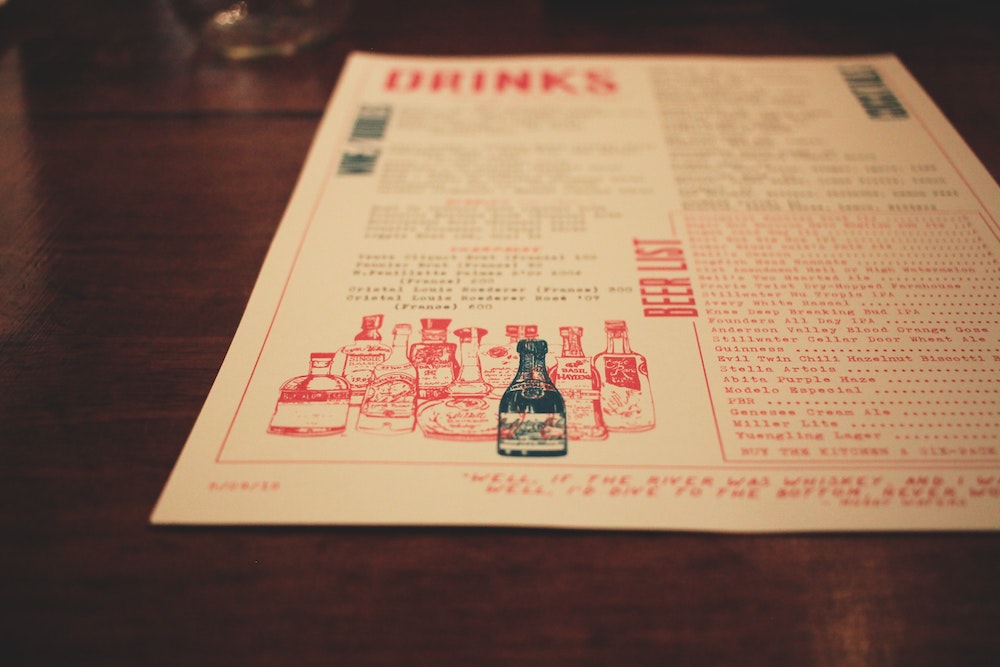A recipe for design job searching & interviewing
All the basics you need to know for finding your next role.
September 5, 2021
All the basics you need to know for finding your next role.
September 5, 2021
Greetings, fellow design job seeker! If you're feeling rusty or uncertain about how to succeed in finding a new role, this is a writeup for you.
A few months ago I left my job of almost 10 years, and landed rather dramatically into a job market that I didn't know how to navigate. To figure it out, I interviewed with a lot of companies and learned on the fly.
Having gone through all of that, I came away with some hard-earned knowledge about the process. There's a recurring set of ingredients and steps you need to take for any job you want, just like a recipe. Imagine you're a restaurant chef and you have to prep a four course meal for the company that might hire you. Read through the steps below and you’ll have a good sense of how it usually goes.
Note: this writeup is tuned for senior level designers and design managers, but most of this will still apply if you're just starting out, or in an engineering/product role.
Also note: these suggestions are mainly about applying at mid-size, public companies that have a formal hiring pipeline. If you’re applying for startups, there will be a lot less fanfare. If you’re applying for a mega company like Google, there might be even more fanfare.

Before you get into any job search, you're going to need some ingredients. Collect an inventory of your past work (hopefully you have this saved somewhere), reflect on everything you've done so far, and consider what you'd like to do next. Think about your personal principles and values, what aspects of work you enjoy and what you dislike, and your areas for growth in your next role.
Growth might mean doing more of the same work at a higher level, working on different problems that you haven't tried before, or switching into a new role/context entirely.
Lastly, think about how much money you hope to make, and generally what type of company seems appealing right now. The specifics are up to you, but you'll need to have a coherent explanation of your future interests, so be honest with yourself, get settled on a general direction, and write it down somewhere. You’ll need to know what you want, and you’ll need to be able to explain it to people.

Now it's time to create an up-to-date portfolio and resumé that reflects what you've been up to. This is hard work. I spent many weeks building this website, which contains a deep dive into my projects, writing, and general philosophy as a designer.
You likely don't need something so in-depth. A one-page site with some personal background and a few work samples is probably the minimum, just make sure it communicates where you've been and where you hope to go next. You can also use a publishing tool like Notion, Craft, or Polywork if you don't want to do something super custom.
The portfolio, philosophy, and resumé are necessary but not sufficient aspects of the job search process. They're like line items on our dinner menu: they help set expectations for what you're offering, so hiring teams can make an initial judgement about you. If you're selling hamburgers, you're not going to attract companies hankering for tacos.

OK, we're finally ready to start letting companies in to our restaurant. That means we have to go out and tell them we're open for business.
There are several ways to do that:
Announce that you're on the market, using whatever social networks you're on. I've found Twitter to be the best platform for design/tech folks, but use whatever works for you. Job searching is the primary time that LinkedIn is actually useful, so get your business suit on and go for it.
Regardless of what network you use, be extremely clear about how you want people to contact you: open up your DMs, share your email address, or set up a contact form. Ask people to retweet or boost your announcement for reach.
Tap in to your personal/whisper networks if you have those. Reach out to former colleagues and friends, holler in Slack channels, text people, just ask around. You might find out about upcoming openings that aren't published yet, or get some direct contacts for companies you’re interested in. Don’t be afraid to ask people for access to whisper networks, either.
Look at job boards and submit applications for openings at companies that seem like a good match. You already have the materials from Steps 1 and 2, so this won't be too tough, but make sure you tailor any application to the company/job description, rather than just sending in a generic form letter. Show the company you care about THIS specific job.
Important: quadruple-check that you have no typos or grammatical errors in your application! You don't want to disqualify yourself just because you misspelled the company’s name. This sounds ridiculous, but it happens a lot more often than you’d think.
Here are a few friendly job boards I like:
Ease into all of this slowly at first, and see if you get any responses. You can always blast-apply for all the roles you’re interested in, but if you get calls for several of them, it might be overwhelming.
Once you start applying, you should take notes on everything you're doing. Keep track of companies you've applied to, save links to the job descriptions, contact info, notes, compensation info, and anything else you want to track. You’ll also need Google Calendar, since almost everyone uses this to schedule interviews and calls. Make sure you have a system for tracking all of this in advance. I just used Tot for taking notes and Fantastical for events.

Hopefully soon you’ll get callbacks or interest from some companies. Most of the time, you'll start by having a ~30 minute phone call with a recruiter. This is like an appetizer, just a warm-up to the main course.
They'll explain a bit about the company and the role, and you'll need to re-tell the same information from Step 1: your work experience, interests, and future goals again. Be sure to contextualize your answers around the job you're actually applying for, so if it's a design systems job, you’ll need to talk in more detail about your design systems experience.
The bar you’re trying to clear is proving you have basic competence and qualifications, and that you don’t seem like an asshole in some way.
Also prepare to talk about compensation expectations. Sometimes recruiters will ask, sometimes they won't. If they don't, it's fine to bring it up, but some folks will be cagey about money discussions until you've made it through more interview rounds. The main goal at this early stage is to make sure you're not way off. If you expect 150k and the role is going to top out at 100k, both parties shouldn't waste each other's time.
There are varying opinions about how to do the early compensation chat. Some people recommend never saying a number, and others claim you should definitely say a number. Here's what I found worked well:
Recruiter: Do you have a target for compensation?
Me: I'm pretty flexible. Do you have a general range you're expecting for this role?
Usually they'll state a conservative estimate, which is like the floor you would expect for the lowest-level entry into the position. You can probably expect the ceiling to be ~20% more than whatever they quote.
BTW: recruiters are legally not allowed to ask what you've been paid in the past, so it's your choice if offering that info would give you some leverage or not.
If you’re interviewing at a publicly traded company that offers equity (stock) as part of the compensation package, you need to know a lot of technical details about how that works. Check out the addendum at the end of this post for an explainer. You should have a good understanding of this before you talk to the recruiter, otherwise they’ll be speaking gibberish, and you’ll have to nod your head agreeably while desperately Googling info about stock grants. Let’s just say I learned this the hard way, lol.
One other note about compensation. Most companies will quote some combination of the following parts:
You’ll get quoted a "total compensation" number, which is a projected sum of all those bits combined. Not all companies offer all those bits, either. You might get an annual bonus but not signing, or equity but no bonuses.
Regardless of the specifics, keep in mind that salary is the only guaranteed money. Everything else is subject to some amount of risk or variance. Bonuses may or may not be granted in full. Equity can range from useless to life-changing, depending on how the circumstances play out. It’s up to you to decide what blend you want, and what your risk tolerance is, but the safe bet is to optimize for salary first.

The next step after talking to a recruiter is typically a 1:1 call with the hiring manager (the person who will be your manager if you get hired.)
This is a more serious interview than the recruiter chat, but just barely. It’s mostly a “get to know you” call where the manager can go into more depth about the job, and learn about your background and interests. Get ready to repeat your story from Step 1 again! See why we needed to nail that down?
This is a perfect opening to get a stronger sense of the company and their motivation for hiring. The only reason companies hire people is because they’re struggling in some aspect, and they’re aspiring to make progress in a new way. So the hiring manager will usually be candid about that.
Like any good first course, it should be a great opening: not too light and not too heavy. Everyone should walk away from the conversation feeling good, with some positive energy to continue. If not, this will be the end of the line. Don’t feel bad about closing up shop if you're not feeling it. Just tell them you’re exploring other opportunities instead.

If everything went well in the previous step, your recruiter will let you know they’d like to proceed. At this point the process may fork in a few ways:
A more rigorous interview or 1:1 presentation with the same hiring manager or a small group. You’ll present some past work, and talk about your skillset and experience in greater detail.
A series of “onsite” interviews. This is sort of a holdover from the days when a company would fly you in to their office and spend 8 hours with you in various intro meetings with stakeholders. In a remote context, it’s basically the same, just over Zoom instead.
A work assessment, either with a live pairing code/design session, or a take-home project you’ll complete over a designated period of time.
Option 2 is the most common, usually also with the presentation from 1, and occasionally ALSO requiring something like 3.
This phase is the hardest. It’s a lot of work. In most cases you’re looking at a 1-2 day commitment to presenting and being periodically grilled in interviews with cross-functional peers, like engineers and product folks. Not to mention all the prep time leading up to that.
That means it’s gut check time. You should be enthusiastic about this opportunity, if you’re going to take so much of your time and the company’s time. You don’t want to find yourself in a long series of grueling interviews when your heart isn’t in it, so make sure this is something you seriously want before you commit. Double check reviews on Glassdoor and Blind to get a sense of the company’s pros and cons—but take these with a grain of salt. They’re about as trustworthy as product reviews on Amazon.
The process will be exhausting for sure, but it’s also the primary opportunity for you to glean if you like this company and this team. The people you meet, their priorities, and their sensibilities will all become apparent. Remember that you’re interviewing them too. You should enjoy talking to them.
You’ll also get a sense of how organized the company is. Scheduling interview rounds with many participants is tough. There will be a lot of back and forth about times and dates. Some meetings will inevitably get rescheduled a few times. Your recruiter will prep you for whatever you’re expected to do, so you’ll know roughly what they're looking for.
You also have to make a presentation! These usually run about 45 minutes. If you're presenting remotely, you'll need to pipe your presentation into a Zoom or Google Meet screenshare, and then tell your story to a group of observers who have their mics muted and their video turned off. It’s a weird experience, sort of like just shouting into a cave and hoping people are hearing you.
Take about 10 minutes to introduce yourself, sharing your story and background (yet again), and then spend the remaining 30 minutes on case studies and showing some past projects. These ought to be tailored to the job you’re trying to get, so you’ll need a library of case studies to draw from.
In the case studies, focus on how you solved a type of problem rather than just showing generic design work. Your portfolio already gave everyone the big picture, so now focus in on some specifics. Show a case study where you overcame an engineering roadblock, or where you had a novel idea and persuaded the team to go for it. Any relevant examples that demonstrate your ability to get things done in the face of the many adversities of design work.
Also make it clear precisely what your role was in the work you did. Were you leading the project or executing someone else’s vision? How much of the final product did you produce?
For more advice on prepping a great portfolio presentation, check out this post from Brian Lovin.
After the presentation, you'll meet in smaller interview rounds with one or two people at a time. Show up to these interviews with a set of questions to ask. Here are a few that I asked almost everyone:
- What’s the design culture like at your company?
- How are product teams organized, and what’s the overall size and work process?
- How is your work/life balance, and how has that changed over time?
- How do you feel about this company’s transition to remote work?
- What are the challenges you’re facing as a group right now?
- What do you think success looks like for someone in this role?
- What was your experience onboarding as a new employee at the company?
- Are most of your projects product-driven, design-driven, engineering, or a mix? Who has the final say when there's a disagreement?
- What’s coming up next for the company? Do you feel it’s in a healthy place, growing, positive initiatives, etc.?
At the end of all of this, you will be tired, so don’t pack several of these interview rounds into a single week unless you’re intentionally trying to sync up multiple offers.

Alright, you made it! The main course is heavy, but the finisher is hopefully sweet. A few days will go by, and then your recruiter will reach out with a decision to make an offer or not.
If not, don’t despair. Remember that this is a process of finding the right mutual fit. If the company decided to go in another direction, that's good for you too. You should join a company that’s eager to have you, because that’s where you’ll do your best work! It’s always valuable practice to go through an interview round—you’ll get better at it every time.
It’s also common for a company to discover they want to hire you, but not for the exact role you interviewed for. Be prepared to take a little detour along the way, and if that happens, it will prolong your timing somewhat.
But whenever you do get an offer, CONGRATS! It’s time to move on to the last step.

Not all meals require a nightcap, but this has been a damn marathon, so a cup of coffee is in order.
Your recruiter will probably call you, and then inform you about the company’s intention to make an offer. This verbal conversation is a good time to settle any terms that you were uncertain about leading up to this point, and ask questions. If you’ve had a money conversation already, this is the time to ask for a bump to the high end of the range you expect.
Reagardless of your previous conversations, you should almost always ask for more money*. Why? Because the worst case scenario is that they’ll say no. In all other scenarios, you will get more money. So ask! Remember, the company has also invested a ton of time into interviewing you, so they’ll probably try to approve any reasonable requests.
The key word there is “reasonable.” You can’t realistically expect a place to 2x the number they quoted you originally, so don’t ask for something too extreme, or you'll run the risk of pissing them off. But you can certainly ask for a salary bump or whatever else feels fair, especially if you can justify it based on your prior experience.
*One caveat: don’t bother asking for more money if the company has a publicly published, transparent salary system. In that case it's probably not going to be negotiable because the company has standardized compensation for every role and level. Buffer is an example of this.
You should also have a start date in mind. Here’s my advice: the interim time between getting a job and starting the job is one of the sweetest tiny breaks in life. It's a moment to rest, relax, and know that you have something interesting to look forward to. So if you can, kick that start date a few extra weeks out, and take a little vacation.
The recruiter will need to get approval for all of this before making a written offer, so expect a couple of days of waiting.

It’s finally closing time at the restaurant. All that’s left now is agreeing to the terms, signing on many dotted lines and getting contracts settled. Nothing is official until it’s all on paper, so make sure you review the contracts thoroughly. If you need a carveout for side projects, don’t forget to report that. If you have any other changes, now’s the time.
You should also look closely at the benefits packages and make sure you understand everything. Double-check the 401k match if there is one, the health plans, vision, dental, wellness benefits, vacation time / PTO, and anything else the company offers.
Depending on the company's hiring rigor, there might be several more steps here, like doing a background check, verifying your past employment, contacting references, and ordering equipment.
You might find yourself with several companies or offers you’re interested in. This is a good problem to have, but it can be difficult to figure out which option is the best fit.
The decision comes down to what makes sense on paper and what feels right. For the paper part, make a spreadsheet to cross-compare the practical details of each job, using these categories as columns:
For the feel part, try rating the options in these qualitiative categories:
This way you can visualize all the different aspects of the jobs you’re considering, and potentially rule out or down-rank the ones that aren’t working for you.
MAJOR DISCLAIMER: I'm not a financial specialist, so the following explanation is just what I've learned trying to understand this for myself. Definitely do more research and make sure you fully grok these terms before you negotiate any compensation package. This is just a brief explainer of the major things you need to know.
RSU stands for Restricted Stock Unit. These are stock shares that a publicly traded company may grant to you, as part of your compensation agreement. It's "restricted" because you must work at the company for a certain amount of time before you're granted any shares.
Here's an example of an RSU agreement a company might offer:
"$400,000 in RSUs over a 4-year vesting period, with a one-year cliff, and annual refreshers."
Let's break this into human words:
If you work at the company for 4 years, you'll get the entire RSU grant. If you quit or get fired before that, you won't get the whole amount. 4 years is when you're fully vested.
You have to work at the company for at least 1 full year in order to get any stock at all. This is why it's called a "cliff." If you leave before the first year is up, you get zilch.
After the first year, you'll be granted 25% of your total amount. After year two, you'll get another 25%, and so on. In our example, after the one-year cliff, you'll get 25% of $400,000, or $100,000. Some companies use a different vesting schedule, like monthly or quarterly, so make sure you're clear on this. Once some portion of your grant is vested, you'll be able to sell the shares.
A "refresher" is an additional bit of stock that the company may grant on top of your original RSU agreement. Let's say you have the $400,000 agreement. A refresher would be some extra amount (maybe $25,000) added every year after the first year. This ensures you’ll still continue to get some stock annually if you stay at the company past the 4-year term of the base RSU agreement. Some refreshers also have a compounding factor, such that the refresher amount gets higher the longer you stay.
That's the basic explanation, but there’s a lot more to this. You should check out these detailed explanations to get a complete understanding, and be sure to dig into tax implications too:
If you made it this far, way to go! You’ve become a business professional!

I hope this little recipe was helpful for you. If you have any more advice or important things I missed, send me an email and let me know.
Thanks for reading, and best of luck!
P.S. shout out to Unsplash for all the silly stock photos of food stuff. Also shout out to the Haha Business guy for being so good at businessing.
P.P.S. I originally sent an early draft of this post to my newsletter. If you'd like exclusive access to my various brain ramblings, including at least one pun per month, subscribe below.
Want to get new posts by email?
Subscribe to my newsletter: